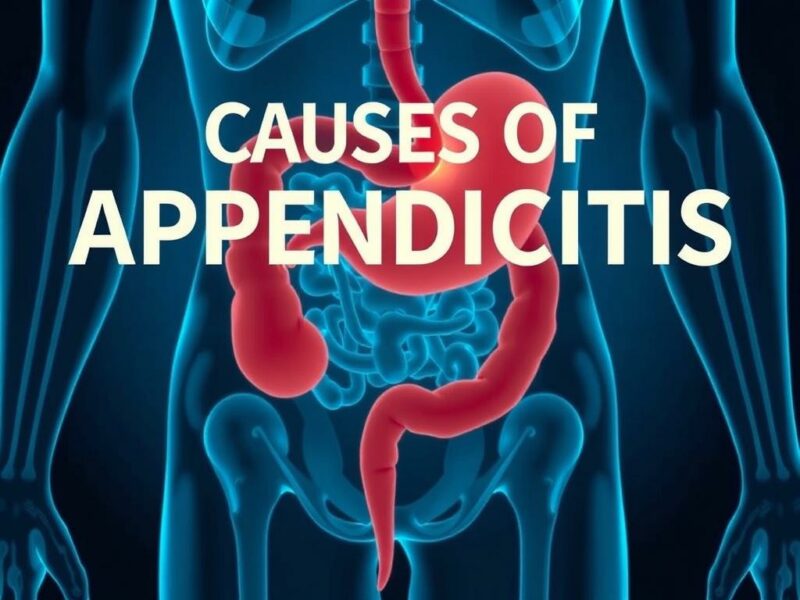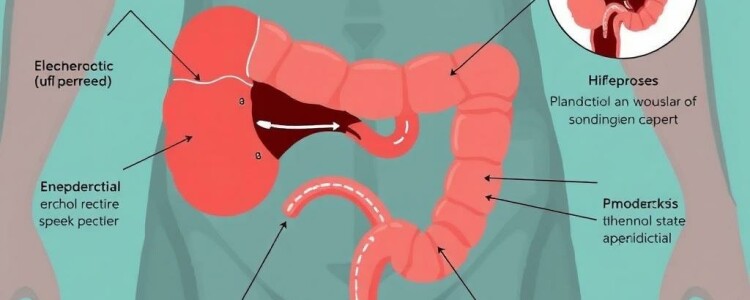Appendicitis is a medical condition that many people have heard of but might not fully understand. It occurs when the appendix, a small, tube-shaped pouch attached to the large intestine, becomes inflamed. Though it’s a common cause of abdominal pain, especially in children and young adults, the exact causes of appendicitis can sometimes be a bit mysterious. Understanding what triggers this condition is crucial because prompt treatment can prevent serious complications. In this article, we will explore the various causes of appendicitis, how it develops, and what you can do to recognize its symptoms early.
What Is Appendicitis?
Appendicitis happens when your appendix becomes swollen and inflamed. This inflammation is usually caused by a blockage that traps bacteria inside, resulting in infection. If left untreated, the appendix can burst, causing potentially life-threatening infections in the abdomen. Knowing the causes of appendicitis can help people understand the risks and importance of quick medical intervention.
The appendix is often thought of as a vestigial organ, meaning it no longer has a clear function, but some studies suggest it plays a role in gut immunity. When something blocks the opening of the appendix, such as stool, mucus, or even a foreign body, bacteria multiply rapidly, causing swelling and pain.
The Main Causes of Appendicitis
Many factors can lead to the development of appendicitis. Some causes are more frequent than others, while a few are quite rare but still significant. Let’s break down the leading causes:
1. Blockage of the Appendix Opening
The most common cause of appendicitis is the blockage of the appendix’s opening to the large intestine. This blockage can be caused by various things, including hardened stool known as fecaliths, tumors, or enlarged lymphoid tissue in the appendix. When the opening is blocked, mucus builds up, creating pressure and making it easier for bacteria to thrive.
- Fecaliths: These are hardened lumps of stool, and they are one of the primary culprits in appendicitis cases.
- Enlarged lymphoid tissue: This can swell due to infections elsewhere in the body and contribute to blockage.
- Foreign bodies: Though rare, swallowed objects can get trapped and cause irritation and blockage.
2. Infection
Certain infections can cause inflammation and swelling of the lymph nodes in the intestines, which can suffocate the appendix. Viral, bacterial, or parasitic infections affecting the digestive tract sometimes trigger appendicitis by causing lymphoid hyperplasia—swelling of lymphoid tissues that obstruct the opening.
Common infections linked to appendicitis include:
| Type of Infection | How It Contributes to Appendicitis |
|---|---|
| Viral (e.g., adenovirus) | Causes general inflammation in the intestines and swelling of lymphoid tissue. |
| Bacterial (e.g., Salmonella) | Can directly infect the appendix or surrounding tissues. |
| Parasitic (e.g., pinworms) | May physically block the appendix or irritate the lining causing inflammation. |
3. Trauma or Injury
While less common, trauma to the abdomen can contribute to appendicitis. A blow or injury may cause swelling or bleeding in the tissues around the appendix, which might block the appendix opening indirectly. This kind of internal disruption can lead to inflammation and infection.
4. Tumors and Growths
In rare cases, abnormal growths such as tumors in or near the appendix can block its opening. These growths interfere with normal drainage, causing fluid and bacteria to get trapped. Tumors may also cause irritation, increasing the risk of appendicitis.
Additional Factors That May Increase Risk
Appendicitis can affect anyone, but some factors might increase the likelihood of developing this condition. These aren’t direct causes but may create a setting more favorable to blockage or inflammation.
Age and Gender
Appendicitis is most common between the ages of 10 and 30 years old, but it can occur at any age. Males are slightly more prone to developing appendicitis than females, though reasons for this difference aren’t entirely clear.
Diet and Lifestyle
Certain dietary habits might influence appendicitis risk. For example, diets low in fiber and high in processed foods can increase constipation, leading to a higher chance of fecalith formation. Conversely, high-fiber diets are believed to reduce the risk by promoting regular bowel movements.
Family History and Genetic Factors
There is some evidence that a family history of appendicitis might increase the risk, suggesting genetic factors might play a role in susceptibility. However, more research is needed to confirm this connection.
How Appendicitis Develops: A Step-by-Step Overview
Understanding the causes of appendicitis also means looking at how the condition progresses from onset to full inflammation. Here’s a typical progression:
- Initial Blockage: A fecalith, enlarged lymph node, or other obstruction blocks the appendix opening.
- Mucus Buildup: Secretions inside the appendix continue but cannot drain, causing pressure to build.
- Bacterial Overgrowth: Bacteria multiply rapidly, causing infection and swelling.
- Inflammation and Pain: The appendix wall becomes inflamed, triggering pain signals.
- Complications: If untreated, the appendix can rupture, leading to peritonitis or abscess.
Each step is important because early symptoms might only be mild belly pain or digestive upset. Knowing what causes appendicitis and how it develops can help you seek medical care before things worsen.
Common Symptoms of Appendicitis to Watch For

While this article concentrates on the causes of appendicitis, it’s essential to recognize the signs once the condition starts. Appendicitis symptoms typically begin with a dull pain near the belly button and then move to the lower right side of the abdomen. This is often accompanied by other symptoms such as:
- Loss of appetite
- Nausea or vomiting
- Fever
- Constipation or diarrhea
- Abdominal swelling or bloating
If appendicitis is suspected, it’s critical to get prompt medical evaluation because the condition can deteriorate quickly.
Medical Diagnosis and Treatment Options
Doctors diagnose appendicitis through physical exams, blood tests, and imaging studies like ultrasound or CT scans. The most reliable treatment is usually surgical removal of the appendix—called an appendectomy. In some cases, antibiotics alone may be used, especially if the condition is caught very early or surgery presents too much risk.
Recovery and Prevention
Recovery after appendectomy typically takes a few weeks, during which rest and avoiding strenuous activity are essential. Since the causes of appendicitis often involve blockages, prevention isn’t always straightforward. However, maintaining a healthy diet rich in fiber and managing infections promptly can lower risk.
Summary Table of Causes of Appendicitis
| Cause | Description | Commonality |
|---|---|---|
| Blockage by fecalith | Hardened stool blocks appendix opening | Most common |
| Infection | Viral, bacterial, or parasitic infections causing inflammation | Common |
| Enlarged lymphoid tissue | Swelling due to immune response blocks appendix opening | Common in children and young adults |
| Trauma | Abdominal injury leading to swelling and secondary blockage | Rare |
| Tumors | Growths obstructing appendix drainage | Rare |
When to Seek Medical Attention
Recognizing the causes of appendicitis helps you understand when to get medical advice. Immediate attention is required if you or someone else experiences:
- Severe abdominal pain, especially in the lower right area
- Persistent nausea or vomiting
- Fever over 101°F (38.3°C)
- Signs of abdominal swelling or tenderness
Timely intervention can mean the difference between a simple appendectomy and a dangerous abdominal infection.
Final Thoughts: The Importance of Understanding Appendicitis Causes
Appendicitis is a condition that can escalate quickly but is usually preventable from becoming serious with early diagnosis and treatment. By knowing the causes—whether that’s blockage by fecaliths, infections, or other factors—you’re better equipped to recognize symptoms and seek help promptly. While not all causes can be avoided, awareness about diet, infections, and risk factors can contribute to keeping your appendix healthy. In the end, understanding what triggers appendicitis enhances your ability to protect your wellbeing and respond confidently to this common medical emergency.
Conclusion
Knowing the causes of appendicitis provides valuable insight into a condition that affects millions worldwide. The most frequent triggers include blockage by hardened stool, infection, and swelling of lymphoid tissue, all of which lead to inflammation and pain in the appendix. Although less common causes like trauma or tumors exist, they remind us that appendicitis can result from various factors. Recognizing the symptoms early and seeking medical care can prevent severe complications such as rupture and infection. While prevention may not always be possible, maintaining a healthy lifestyle and monitoring abdominal health can reduce risks. Understanding the causes of appendicitis empowers you to act fast and ensure the best possible outcome should this condition arise.



